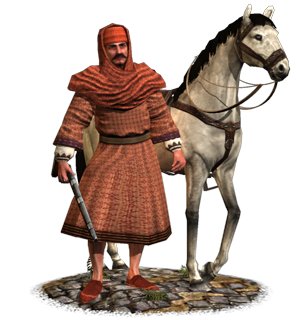Difference between revisions of "Libyan Kuloglu (ETW Unit)"
Tango12345 (talk | contribs) m (Removed category "Heavy Cavalry" (using HotCat)) |
Tango12345 (talk | contribs) m (Quick-adding category "Empire Total War Units" (using HotCat)) |
||
| Line 21: | Line 21: | ||
==Factions== | ==Factions== | ||
*[[Image:Ottoman_flag.jpg|25px]] [[Ottoman Empire (ETW Faction) | Ottoman Empire]] | *[[Image:Ottoman_flag.jpg|25px]] [[Ottoman Empire (ETW Faction) | Ottoman Empire]] | ||
| + | |||
| + | [[Category:Empire Total War Units]] | ||
Revision as of 13:08, 5 September 2011
Libyan kuloglu are auxiliary cavalry, capable of dismounting to deliver a devastating volley with their blunderbusses.
Overview
They also carry sabres, which can be used when in the saddle, giving the ability to fight well in melee. Unlike some other Turkish and Ottoman troops, they do not wear armour. Their blunderbusses are large-bore flintlock weapons, much like giant shotguns, and cannot be used from horseback. They have a very short range but a blast from one, let alone a volley from a whole unit, is terrible. This weapon makes the kuloglu a superb attacking force, if they can get within range of the target. They suffer when facing troops with longer-ranged muskets or rifles.
Historically, the kuloglu were recruited from the sons of ethnic Turkish janissaries and local, Libyan women. These men were specifically excluded from joining the ranks of the prestigious janissaries, proving their worth by fighting with bravery and discipline - particularly during the American attack on Tripoli. Indeed, kuloglu who behaved in a cowardly way were made to dress as women until they redeemed themselves through acts of not-quite-suicidal bravery, or died in the attempt. This, however, was mild compared to what was done to any who β€?abusedβ€? young prisoners taken in battle: the offender was beheaded or beaten 1000 times with a stout cane, something that was surely a protracted death sentence!
